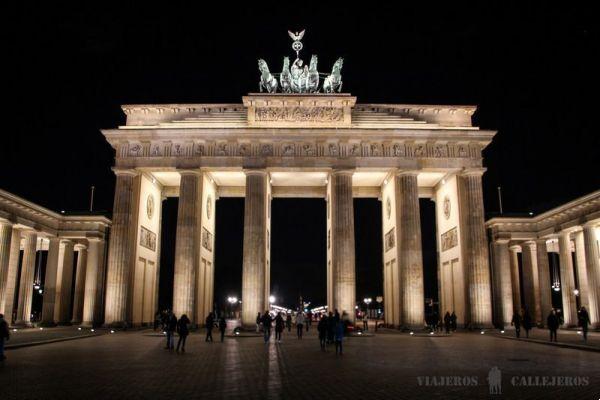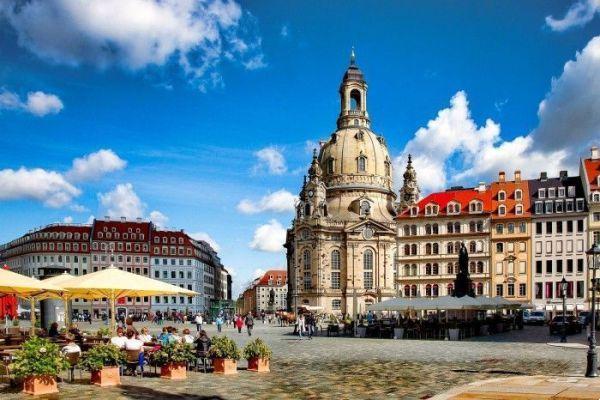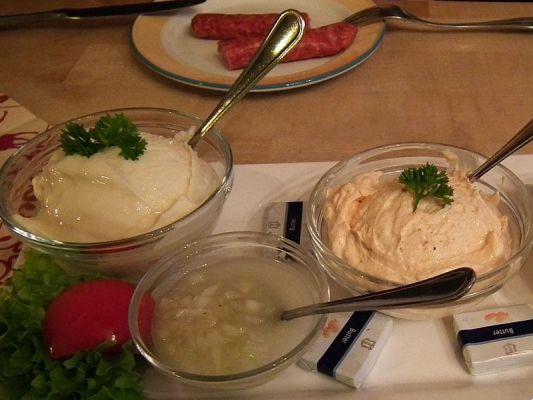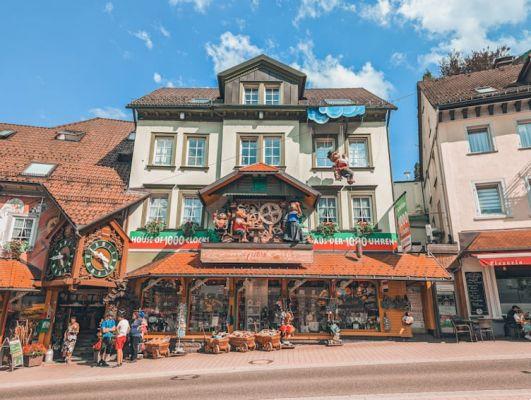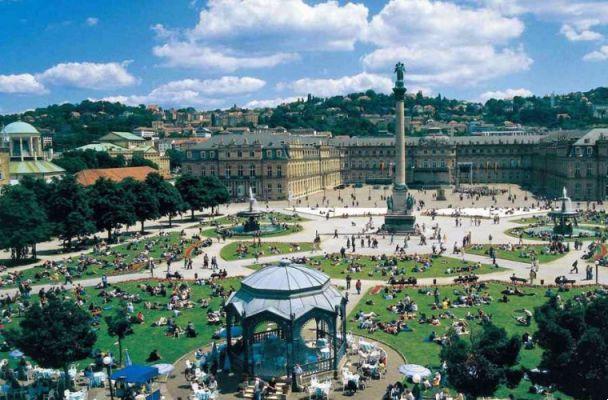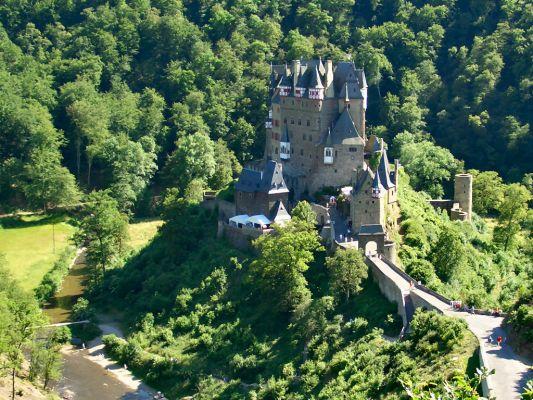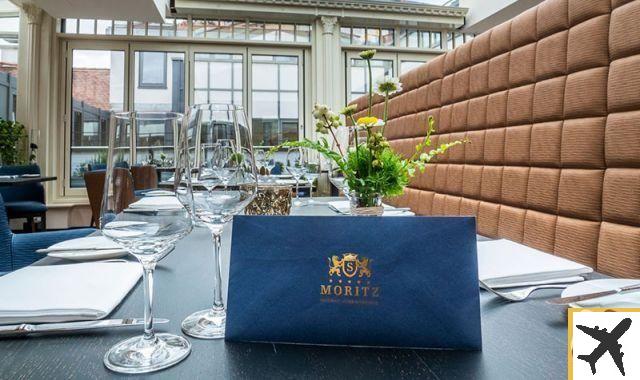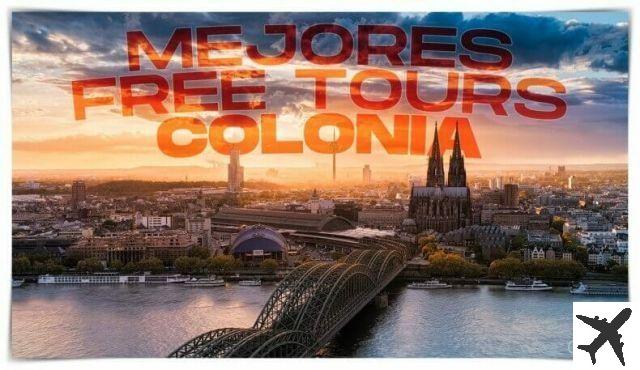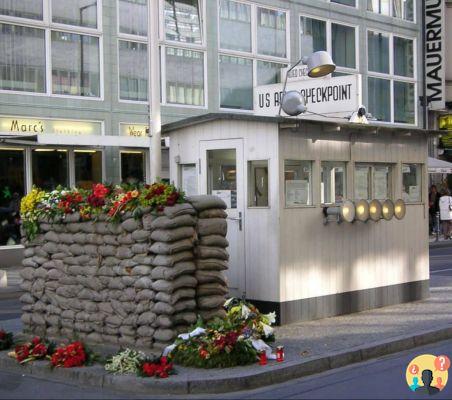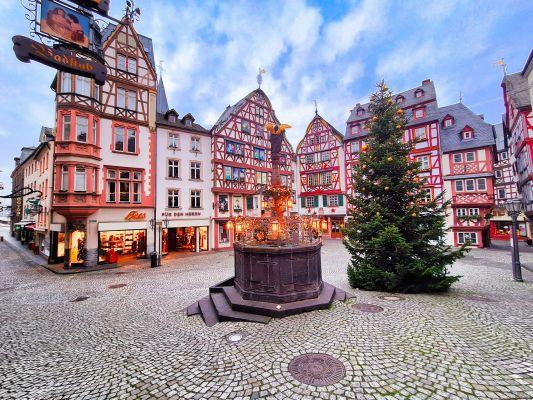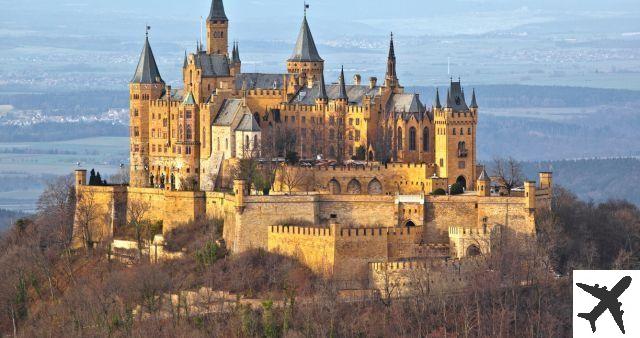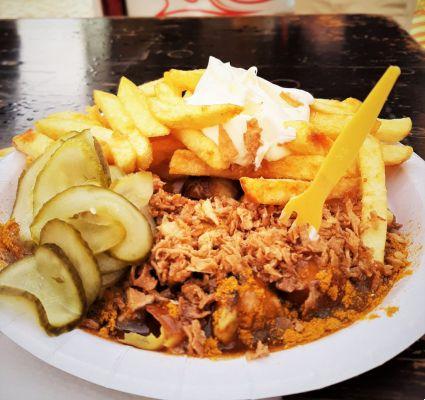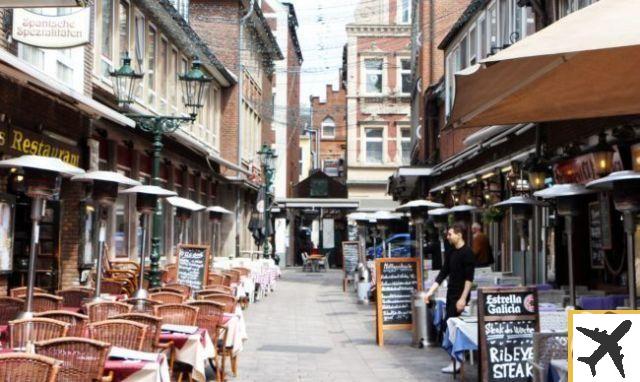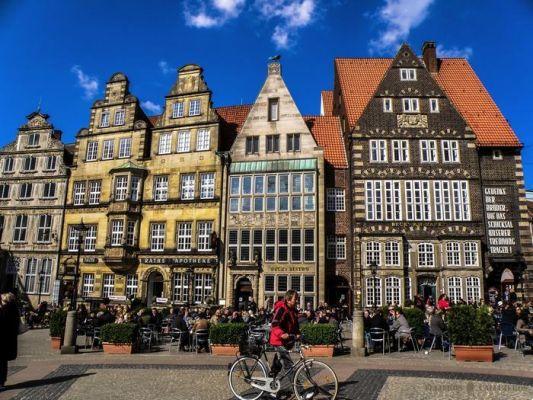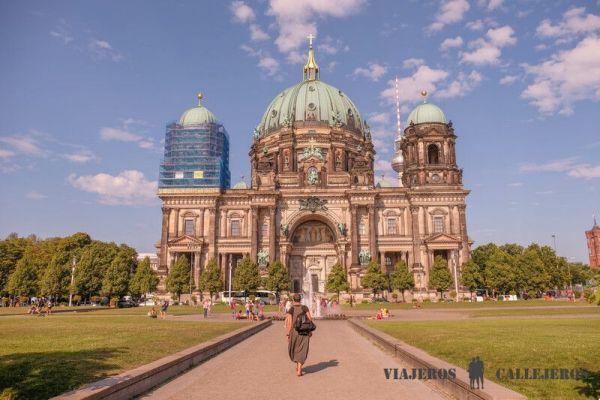One of Berlin's most famous attractions, the Memorial to the Murdered Jews of Europe is much more than just cinder blocks. See more below:
The Holocaust Memorial in Berlin is a complete tourist attraction, mixing history, contemporary art and inviting reflection on the terror of World War II.
Officially called the Memorial to the Murdered Jews in Europe, this facility is located in the historic center of Berlin and was created to honor the estimated 6 million Jews murdered under Adolf Hitler and the National Socialists.
The memorial, designed by Peter Eisenman, consists of 2.711 concrete blocks in the form of cubes of various sizes. It was built between 2003 and 2005 on an area of approximately 19.000 m² south of the Brandenburg Gate.
The official opening took place on May 10, 2005, and in that year alone, more than 3,5 million visitors attended the memorial. Today, it is managed by the Memorial Foundation to the Murdered Jews in Europe and has become one of Berlin's most important points of interest.
Buy your travel insurance at a discount!
Get 10% off with coupon FORTRAVELOVERS + payment by check.
Click here and enjoy!
In this post you will read:
- History of the Holocaust Memorial
- The Information Center
- How to get to the Holocaust Memorial
- What to know before visiting the memorial
- Hours of Operation for the Holocaust Memorial
- Berlin – Travel Guide
- hotels in berlin
- internet chip in germany
- Berlin travel insurance
- Berlin car rental
- Flights to Germany
- Frequently Asked Questions
- Read all our tips and posts from Germany
History of Holocaust Memorial
The 19.000 m² area had been left empty after the fall of the Berlin Wall, remaining as a wasteland for more than 10 years. However, the idea of creating a memorial was born before the fall of the Wall, back in 1988, when journalist Lea Rosh suggested building the monument.
A support group was founded and the proposal received increasing support, also in the form of donations. In May 1994, a competition sponsored by the governments of the State of Berlin and the Federal Republic of Germany was announced, in which 528 proposals for works were submitted.
1st attempt
A design created by artist Christina Jackob-Marks was chosen: a 20.000 m² concrete plane with the victims' names carved into it. However, the German Chancellor at the time, Helmut Kohl, rejected the project in June 1995.
In July 1997, 25 architects and sculptors re-designed a project, the idea of which was to distance themselves from the concept of a museum and lead visitors to reflect.
Indeed, the project description read: “The monument cannot and should not fulfill the function of a memorial, but it should complement existing memorials at historic sites of Nazi crimes and give them more public attention. In contrast to the information and documentation task of a memorial, the Memorial to the Murdered Jews in Europe is intended to generate a contemplative and emotional sensitivity in the visitor”.
2st attempt
Finally, the selection committee chose the proposal by New York-based architect Peter Eisenman and sculptor Richard Serra, consisting of a field of stelae, a Greek term meaning “lifted stone”.
Since ancient times, monoliths have been used to convey a certain symbolic meaning, be it funerary, religious, territorial or political. And it was this abstract form that the artists found to make the memorial inspire visitors to reflect.
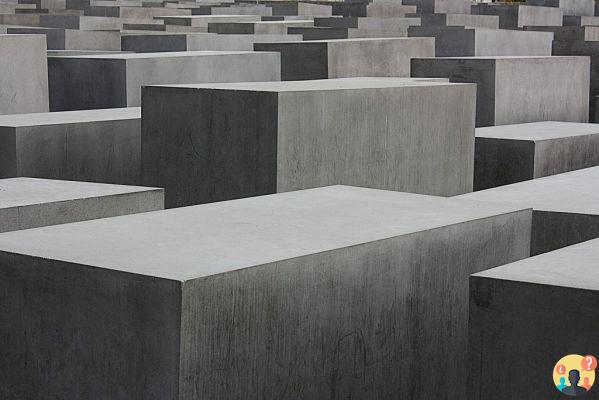
The Information Center
The “contemplative” design of the Holocaust Memorial in Berlin did not please everyone, and many felt a lack of some element that told the story of the Jews killed in World War II, between 1933 and 1945.
As the idea of creating a museum was discarded, the project was modified to house an Ort der Information (literally, “place of information”), which is located below the concrete blocks, in an underground entrance.
The exhibition at the Information Center documents the persecution and extermination of Europe's Jews and the historic extermination sites. Designed by Dagmar von Wilcken, this place is in the southeast corner of the field of stelae and has the function of complementing the abstract form of memory transmitted by the monument with information about the victims.
Four themed rooms provide information on victims to be honored and authentic memory locations. The personalization of memory occurs, among other things, through the representation of stories of Jewish families that were destroyed by the Holocaust, and also through short biographies of murdered Jews.
There is also the Room of Names, which contains the names of all the Jews murdered by the Nazi regime across Europe.
Want to have unlimited internet throughout your trip?
Compare prices and buy your international travel chip in advance at America Chip, EasySim4U, my chip or with the Connected Travel.

How to get to the Holocaust Memorial
The Memorial is located just a few meters from the Brandenburg Gate, heading south. It is also very close to the German Parliament. Just ahead is the Tiergarten, a gigantic park in west-central Berlin.
For those visiting the Brandenburg Gate, reaching the Memorial on foot is quite easy. Just head in the opposite direction to Parliament (an easy-to-see building as it has a glass dome) and you'll soon see the characteristic concrete blocks of the Holocaust Memorial.
Those who use public transport have several options of buses, subways and trains. Below is the list of buses that pass near the Memorial and the name of the stop where you should get off:
Buses arriving at the Holocaust Memorial in Berlin:
- 100, S + U Brandenburg Gate
- 200, Behrenstr./Wilhelmstr. or S+U Potsdamer Platz
- 347, S+U Potsdamer Platz
- M41, S Potsdamer Platz/Vossstr.
- M85, Ebertstr.
- TXL, S + U Brandenburg Gate
The S-Bahn is Berlin's suburban rail system, and there are three possible lines to reach the Memorial.
These are lines S1, S2, S25 and you should get off at Brandenburger Tor station or at Potsdamer Platz and walk between 5 and 8 minutes.
The U-Bahn is the underground train, or subway, and the U2 line, getting off at Potsdamer Platz or Mohrenstraße, is the best way to get to the Memorial. You can also take the U55 line and get off at Brandenburger Tor, in front of the Parliament.
Those traveling by car may have trouble finding parking, and additionally, parking is subject to metered fees.
What to know before visiting the memorial
Walking among the cinder blocks is a very interesting experience, especially if you consider why they are there. The noise of the city disappears between the tallest cabins and the gray landscape seems to swallow tourists one by one.
That was the intention of Eisenman, the creator of the project: to make people move in time and think about the victims of the Holocaust without using any image or allegory.
For this reason, some rules have been established to guarantee respect for the memory of these victims. Not jumping from block to block – or doing parkour – is one of them. There are guards guarding the monument and making sure no one does mischief, so be careful.
Also, avoid taking pictures or selfies that do not reflect the importance of the place. Traveling is a great experience and if you are enjoying your vacation, you will definitely want to have memories of important moments.
However, the Holocaust Memorial in Berlin can be compared to a concentration camp, as it serves as a reminder of one of the most barbaric crimes in human history.
Therefore, the request is to reflect on the past here.

Hours of Operation for the Holocaust Memorial
Opening hours are Tuesday to Sunday from 10 am to 18 pm. Entrance is free and access for wheelchair users is via an elevator.
The Holocaust Memorial Information Center in Berlin offers audio tours in English, Dutch and German.
Haven't rented a car for your trip yet?
Guarantee the best price, without IOF, and pay in up to 12 interest-free installments at RentCars.

Berlin – Travel Guide
The German capital is one of Europe's top destinations. City rich in history, gastronomy and culture with beautiful landscapes and many attractions for all ages. When visiting Berlin, it is worth visiting some of the city's main sights, such as the East Side Gallery, Checkpoint Charlie or the Brandenburg Gate. Check out what to do in Berlin to build your travel itinerary.
- Berlin Weather
Book all your Berlin tickets and tours in advance and skip the lines with GetYourGuide
hotels in berlin

The Mitte region is where the main hotels in berlin, however, throughout the city you can find comfortable and elegant accommodations. That's why it's worth researching and booking your hotel calmly and in advance. That way you avoid possible problems during the trip! ?
- Hotel Adlon Kempinski Berlin – Daily rates from € 497 – Note 9,2
- Radisson Collection Hotel – Daily rates from € 205 – Note 8,8
- KPM Hotel & Residences – Daily rates from € 190 – Note 9,3
- Schulz Hotel Berlin – Daily rates from € 105 – Note 8,5
See all hotel options in Berlin.
See also:
- Where to stay in Berlin – The best neighborhoods and hotels
internet chip in germany
It's getting easier and cheaper to have unlimited internet throughout your trip in Germany. Nowadays you can buy an international cell phone chip online while you're still here in España. You receive the sim card at your address and then just insert it into your cell phone to reach your destination with unlimited 4G internet working.
Also read more chip tips:
- Europe Internet Chip – Which is the best international chip?
- Viaje Conectado – Know everything about your travel chips
- America Chip – Find out how it works
Berlin travel insurance
Having travel insurance for Berlin is a requirement to enter the city, which is part of the Schengen Treaty and requires medical and hospital coverage of at least €30 for travelers. In addition to being mandatory, insurance is a great way to ensure a smoother trip. Also enjoy our Insurance Promo discount coupon. - SEE PRICES
Read all about travel insurance:
- Travel Insurance for Germany – Everything you need to know
- Documents to enter Europe – See which ones you need
- Travel Insurance Europe – Complete guide on how to hire
- Best Travel Insurance Europe – Which one to choose for your trip?
- How much does travel insurance for Europe cost?
Berlin car rental
We really like Rent Cars to find the cars we use on our travels. It is the only one in Spain that compares the best rental companies in the world, but lets you pay in reais, without IOF. In addition, it is also the only one that lets you pay in 12 interest-free installments. It is worth it!
Flights to Germany
Looking for a good deal and flight prices? When buying tickets to Germany, it is worth taking a look at the website Promo Tickets. It is quite common to find cheaper and better flight options than on other sites. We always use and is it worth it?
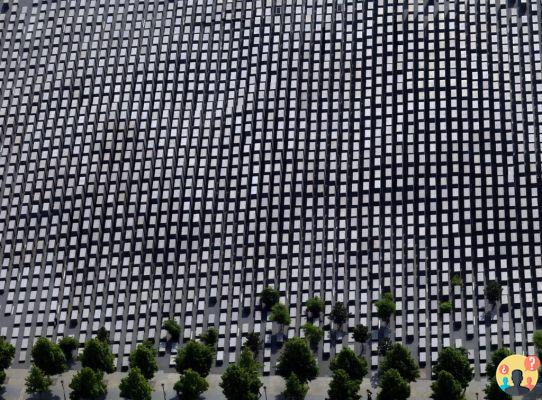
Frequently Asked Questions
Where is the Holocaust memorial?The Memorial is located just a few meters from the Brandenburg Gate in Berlin, heading south. Continue reading...
Where to stay near Berlin's attractions?A good idea for accommodation near the Holocaust Memorial in Berlin is to stay at the Hotel Adlon Kempinski Berlin, or Berlin Marriott Hotel or still in BlnCty Hotel. Explore...
How much time to dedicate to visit the Holocaust Memorial?It is possible to visit the Holocaust Memorial in Berlin in about 2 hours. However, for a more immersive experience at the information center, it is worth dedicating a morning. Continue reading...
What are the entrance fees for the Holocaust Memorial?Entrance is free to both the Holocaust Memorial and the information center located underground. Continue reading...
Read all our tips and posts from Germany
- Hotels in Berlin – The 10 most suitable for your stay
- Holocaust Memorial – What to know before you go
- Checkpoint Charlie – Cold War Landmark in the Middle of Berlin
- East Side Gallery – The gallery that colors the Berlin Wall
- Berlin Weather
- Berlin – Complete Guide to the German Capital
- Berlin Itinerary from 1 to 4 days
- Where to stay in Berlin – The best neighborhoods and hotels
- Munich – Complete Guide to the Bavarian Capital
- Germany – Complete Country Guide




